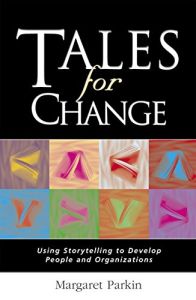Join getAbstract to access the summary!

Join getAbstract to access the summary!
Margaret Parkin
Tales for Change
Using Storytelling to Develop People and Management
Kogan Page, 2004
What's inside?
Once upon a time, businesses used stories to ease people through tough changes. Then, they could live happily ever after.
Recommendation
A book of tales must rise or fall on the quality of the stories it presents. And in that regard, this storybook earns a mixed report card. Most of the stories are clear and pithy, although some hint at change without being directly related to it. A case in point is "The Old Man and his Grandson," a brief moral tale about the need to demonstrate empathy and the fact that everyone grows older. Other stories, however, are perfectly apropos and even come with a hint of humor to prod listeners to accept change. Unnervingly, some of the less engaging stories come from author Margaret Parkin’s personal experiences. On the other hand, her informative introduction makes a compelling case for the power of narrative in introducing and abetting transformation. She supplies excellent questions for further study after each story to keep the discussion on point. Overall, getAbstract recommends this book to those who would like to add a few new anecdotes to their quiver. If just one helps spur your organization be more flexible, that will be a success story worth telling.
Summary
About the Author
Margaret Parkin is the founder and principal of Training Options, a British management and personnel development firm. She has worked with major organizations for more than 20 years. Parkin has a Master’s in Training and Development, as well as a Master Practitioner qualification in neurolinguistic programming. A practiced speaker, she has written two other books, Tales for Trainers and Tales for Coaching.


















Comment on this summary